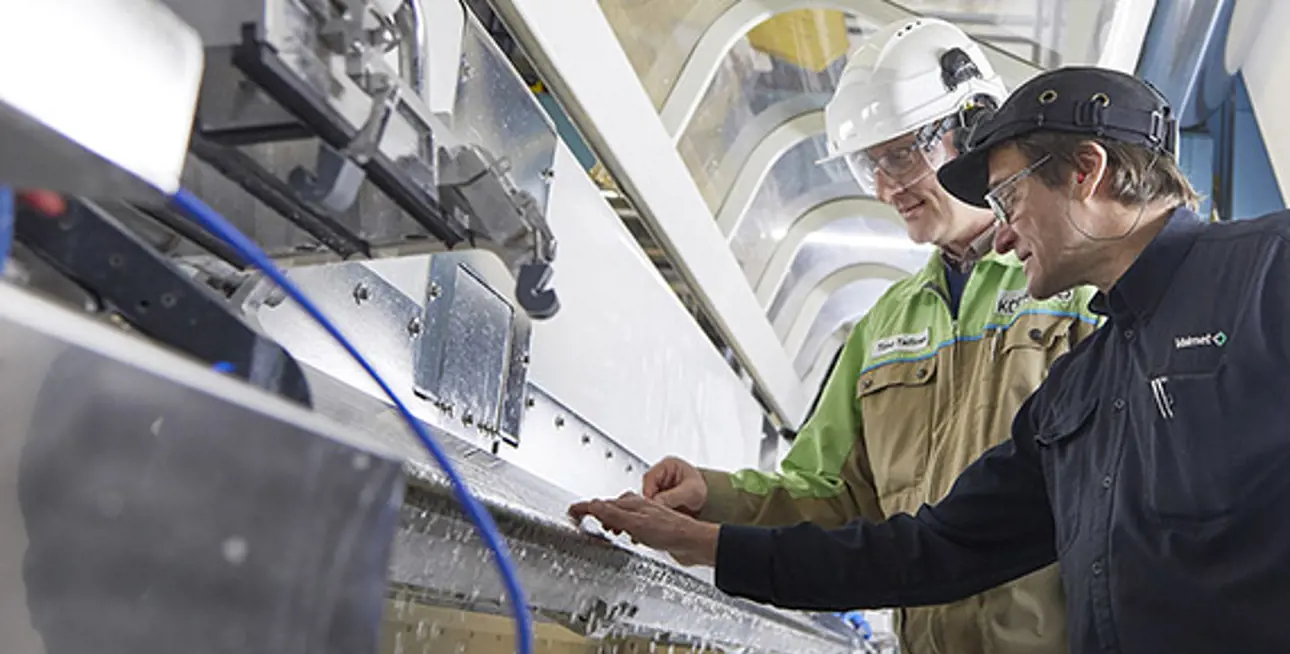Making coffee-to-go greener
Dec 29, 2017
Valmet’s innovative curtain coating technology turns the barrier board production inside out making the cups recyclable like paper waste. It’s an excellent example of circular economy in action.

Probably most of us occasionally buy coffee-to-go on our way somewhere. According to rough estimates, 16 billion disposable paper cups are used for coffee every year around the world, creating vast amounts of waste. Recycling these cups is challenging, due to their plastic content. Plastics, in general, have become a global problem, littering cities, oceans and waterways, and causing health hazards for humans and animals.
Still, changes can be made one step – or in this case, one paper cup – at a time. Kotkamills, a Finnish forest industry company, recently converted its printing paper machine to a board machine. Valmet supplied key technology and an automation package for this extensive project. One of the innovative grades the machine produces is dispersion barrier-coated cup board. Unlike the conventional cup boards, it can be recycled with normal paper waste, recovering and reusing the fibers.
Valmet’s OptiCoat Layer curtain coating stations play an important role in producing this new, more sustainable board grade. With curtain coating, barrier can be applied as a thin coating layer, eliminating the need for a plastic layer. This fully recyclable board is one example of Valmet’s technology solutions enabling customers to improve their environmental performance and lower their ecological footprint.
Responding to global phenomena
Kotkamills’ fully recyclable board products represent an excellent example of how sustainability can be designed into a product to enhance a circular economy and improve daily life. In July 2017, some 50,000 cups made with the new barrier board were tested in real life at The Tall Ships Races in Kotka. The feedback was 100% positive.
This board grade took the first prize in the Urbanization category of the New Tree 2017 competition in Finland in February 2017. The aim of the competition was to find wood-based material or solutions utilizing components of wood that respond to the challenges posed by massive global phenomena, such as conscious consumption, changes in population structure, scarcity of resources, digitization and urbanization. It is convenient then that Valmet’s sustainability strategy is also linked to these megatrends.
Boosting a circular economy with technological solutions
In a circular economy, products, components and materials stay in a continuous cycle instead of being disposed. This very idea is built into Valmet’s solutions. The case with fully recyclable board is one example of how Valmet’s technology solutions enable customers to improve their environmental performance and lower their ecological footprint.
"We are part of a long value chain. Our role is to provide our customers with products and services that best promote sustainability and a circular economy. With our technology, customers are able, for example, to reduce their environmental load by using less energy, water or chemicals or by minimizing waste through the use of production side streams from other applications, processes or even industries," says Laura Puustjärvi, Head of Sustainability at Valmet.
Valmet walks the talk in its own operations. For example, metal chips left over from equipment production are reused in the company’s foundries to make new metal castings. What earlier used to be waste has now become a valuable raw material.

 |
Back in the old daysTraining on the job for welders, arranged jointly with the local vocational school in 1975. |